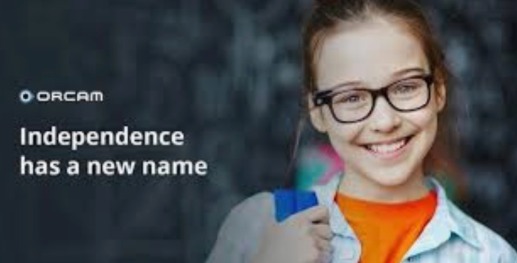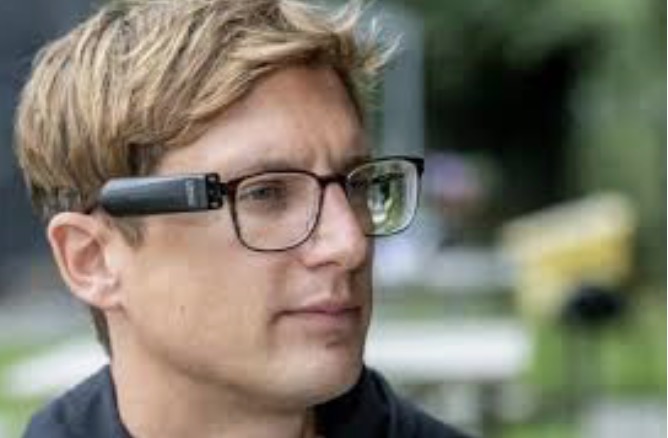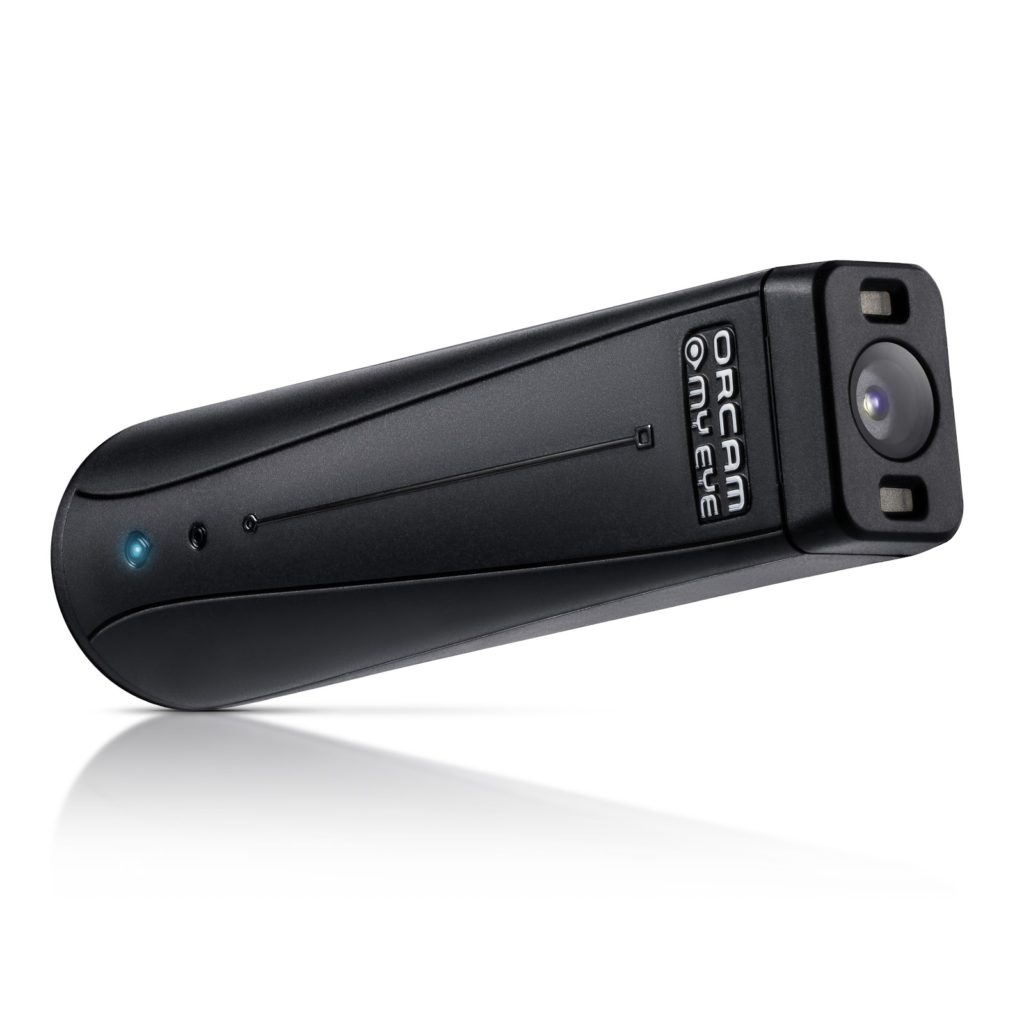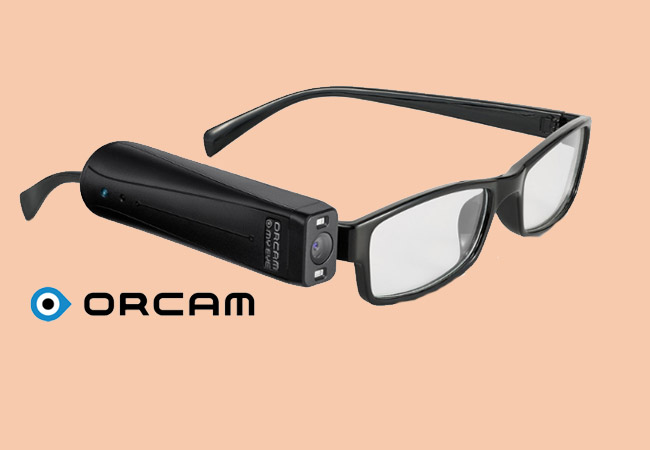Dr. Bryan Wolynski, Zahavit Paz & Holly Bonner
Table of Contents
ToggleMillions of people actively live with challenges that may limit their overall reading ability.
The advent of assistive technology has deeply benefitted the visually impaired, learning disabled, and dyslexia communities. OrCam has become a pioneer of artificial vision technology with their wearable, a lightweight, camera called the MyReader 2. This device not only reads the text, but can identify products, monetary denominations, colors and more – all controlled with a simple pointing gesture!
How Does OrCam MyReader Work?
The device itself is about the size of your finger, weighs less than an ounce and attaches to almost any pair of eyeglasses. If you don’t wear eyeglasses, it can be attached to your sunglasses or a non-prescription pair of glasses. The components consist of a camera which takes a picture and then speaks the text it sees audibly through a speaker next to your ear. It can also be paired with a bluetooth speaker or earphone. In order to activate reading, all you need to do is point your finger towards any printed text. The device recognizes this gesture and then begins instantly reading aloud. It can also rewind, fast forward, pause or increase the speed of reading.
OrCam is different than other reading devices in that it can be used anywhere.
While there are many devices, computer programs and accessibility options for reading within computer operating systems, the MyReader is different. Users have the ability to read “in the wild,” meaning they can be actively living and working in their own communities, confident in their ability to read any signage they encounter. From street crossings to museum exhibits, OrCam’s MyReader allows you to access it all without even being logged into wifi or the internet.
The device works independently, meaning there are no programs to load! Multi-lingual? The MyReader can auto-detect and read Spanish and French! OrCam comes ready to use straight out of the box and the company prides itself on their personal training options which include one on one individual sessions or online tutorials.

OrCam – From an optometrist’s point of view
As an optometrist working in Low Vision I am always looking at new devices and technology that can help or assist my visually impaired patients. In 2013, a patient asked me about a new device developed in Israel called OrCam. I did some research and finally met with the company and was amazed at this new technology. I knew that this was something that would benefit many of my patients.
The OrCam device has multiple functions to help someone with vision loss to cope with daily challenges. Reading is the number one complaint of people with vision loss. The Orcam features a readng function that is truly unique and amazing.
From the optometrist:
After some time working with my patients I found myself using OrCam for reading. I used it everywhere, in coffee shops, on the train, at home to read my trade journals. As a person with a learning disability growing up in the 70’s and 80’s, my problems were just dismissed, but over time I found ways to adapt. I didn’t see the connection right away but soon came to learn that OrCam could help others with learning or reading difficulties. The insightful people at OrCam already knew this, and I was happy to know that they developed a reading-only device called the “OrCam MyReader”. Since then I have been working with OrCam as a trainer and now even speak about the device at conferences. I have witnessed patients of all ages who are visually impaired or blind. They laugh and cry after using OrCam’s reading feature. I look forward to helping others out there with reading difficulties. ( Source: Orcam )
Assistive Technology for people with a reading disability
OrCam – From a layman’s point of view
Zahavit Paz the Founder of LD resources foundation remembers what it was like to have a learning disability. “When I grew up in Israel in ‘60s, accommodation for reading disabilities such as dyslexia didn’t exist. The administrators at my school were not familiar with special education and had no idea how to help me. They explained the situation to my parents and told them that their only solution was to hold me back by 3rd grade. My parents found this situation unacceptable.
In 1973, The U.S. Department of Education enforced the Rehabilitation Act, Section 504, a civil rights statute which prohibits discrimination against individuals with disabilities. The first assistive technology law, the TECH act, was officially passed in 1988.
Although I faced many difficulties in school, I didn’t have to repeat the class because I studied much harder than other students. Eventually, I graduated from the High School Of Science by memorizing Chemistry and Biology formulas. I loved those subjects. When I was trying to complete my undergraduate degree and, years later, my Masters, I realized that my reading disability had prevented me from completing my studies earlier. Fortuitously, by that time, the subject of dyslexia was publicized in the news as well as on TV. I went to a therapist who diagnosed me with dyslexia. For the first time, at age 40, I realized why it was so difficult for me to read! Another therapist diagnosed me with dual a diagnosis – dyslexia and ADHD.
Assistive technology digital and audio text books for reading disablities
In the late ‘90s, the library for the blind made books available for dyslexia for the first time. That’s how I was able to study, though it took me much longer to read than the average student.
I knew that technology would be the answer to my reading disability. I enjoyed books that friends read to me aloud. Now we have many sources of textbooks.
LD Resources Foundation Action was established in 2001 with a mission to bring awareness and advocate for assistive technology and accessible books and to be able to receive accommodations. We are passionate about helping students succeed. We created awards programs for low-income students and consult schools, colleges, and individuals on assistive technology.
Orcam device for people with a reading disability allows greater independence
However, I made mistakes every day with reading and spelling when I was not using a computer, iPad or scanning document using OCR software. When I am asked to fill up forms at the doctor’s office, voting machine, reading manuals and supermarket, museum, and gym, etc.

Once I discovered the OrCAM device, it changed my life! I feel independent wherever go whenever I need to read anything. Recently, I used OrCam at the Andy Warhol exhibit at the Whitney Museum. It was a whole new experience because I was able to read the exhibit labels.”
Discovering the benefits of OrCam’s Reading Technology For Families: A Blind Mom and A Daughter With Dyslexia
Seven years ago, I lost my eyesight after a long battle with breast cancer. My disability forced me to relearn everything from doing my laundry to crossing the street. As a blind woman who wanted to maintain an active professional life, I looked for technology that would provide me optimum useability with the convenience of portability. OrCam quickly became a lifeline. With the help of the MyReader, I have been able to work and raise a family on my terms, independently.

When my six year old daughter was diagnosed with dyslexia and language processing disorder, I knew the MyReader could help her develop some basic phenomic skills. From letter recognition, to turning the pages of her favorite Dr. Seuss books, both she and I utilize OrCam to read together. Many children with dyslexia can suffer from low self-esteem and feelings of immense frustration.The MyReader2 has allowed me to slowly rebuild my daughter’s confidence, empowering her to independently and successfully learn many of the foundational components of reading.

OrCam MyReader is truly a unique and amazing technology that is now helping many more people, from those with vision loss to those with reading difficulties such as dyslexia or other learning disabilities. For more information, visit www.orcam.com.



